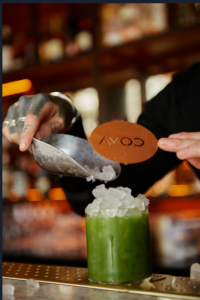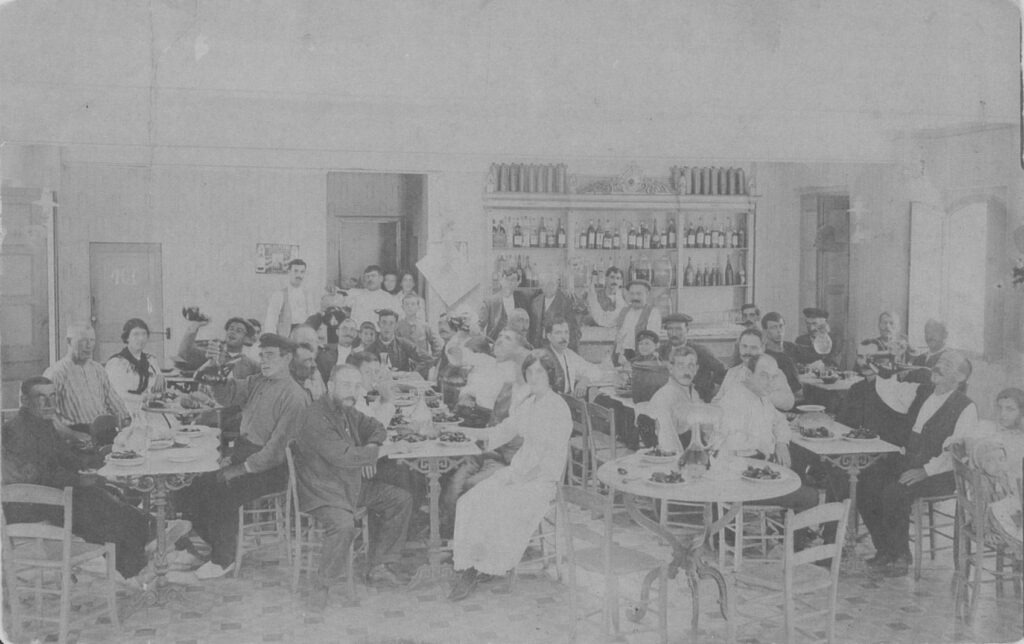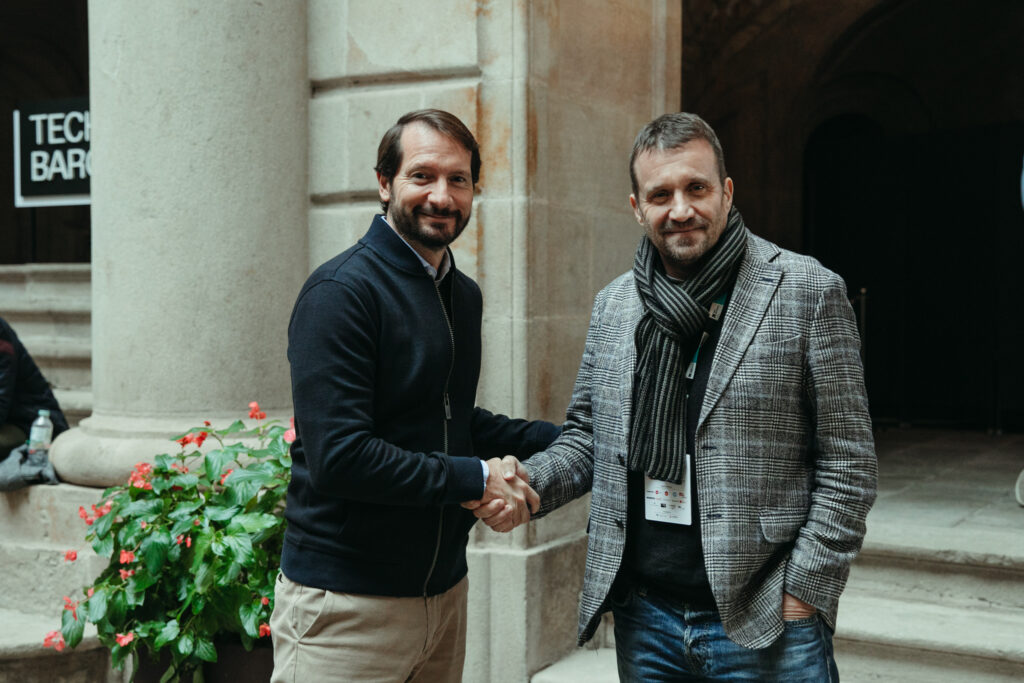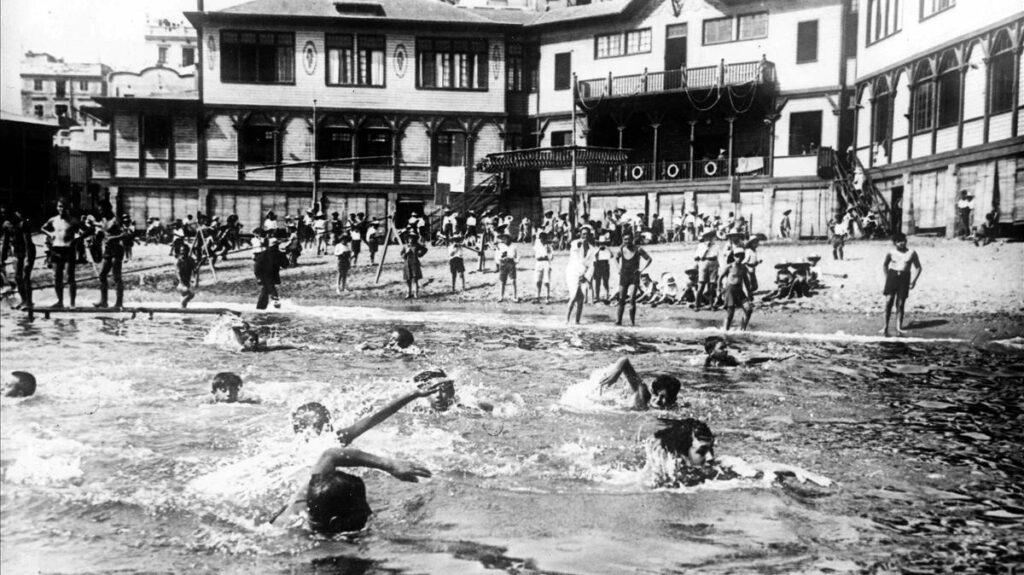There are very few people left who remember that there was a bullring in Barceloneta called the Torín. It was the first fixed bullring in Spain and was located where the Torre Mare Nostrum now stands, headquarters of Gas Natural Fenosa, a building by Enric Miralles and Benedetta Tagliabue.
It was promoted by the Junta de la Casa de la Caridad, the same one that created the first baths on the beach, which, lacking sufficient aid and donations, saw bullfights as a source of income. The royal authorization for the construction of the bullring arrived in March 1827, signed by Ferdinand VII himself, with the condition that there would be six bullfights a year. It is known by all the relationship that exists, in many ways, between the Bourbons and the bous.
The architect Josep Fontserè i Domenech was in charge of the design and construction of the building, which had to limit its height to two floors because Barceloneta was not yet part of the city and was a military zone. Bear in mind, that until 1872 the neighborhood was not part of the city of Barcelona and we were surrounded by forts and barracks. The upper floors of the square had to be built in wood. The arena measured 60 meters in diameter and had a capacity for 13,000 people. It underwent four other reforms throughout its existence: in 1857, 1871, 1875, 1879 and 1888, coinciding with the Universal Exposition, when the columns were placed, and the wooden floors were replaced by bricks. Finally, the bullring was inaugurated on July 26, 1834 with bulls from the Javier Guendulain ranch and the bullfighters Juan Hidalgo and Manuel Romero Carreto.
It worked like any other bullring with a loyal audience and lovers of the activity. Rafael Molina was one of the outstanding bullfighters, better known as the Lagartija, of Cordovan origin and who, for the first time, on May 13, 1877 in one of his performances used music to follow the steps of the muleta. The chronicles say that after the good job he had done, a man from the audience stood up and called out to the municipal band: Music! Since then, it has been the custom to accompany the bullfighters’ work with melody. Another outstanding bullfighter was Pere Aixelà y Torner, better known as Peroy , originally from Torredembarra and one of the first Catalan bullfighters who took the alternative on June 12, 1864 in the Torín .
In 1862 there was a character in the stands, who left written his experience in the Torín: Hans Christian Andersen, who spent a week in Barcelona. In his book Spanien, published in 1865, he tells us everything he experienced that Sunday afternoon.
One of the first administrators of the square was Rossend Arús i Arderiu, a journalist, businessman and a founder of the library on Passeig de Sant Joan that bears his name, specializing in Freemasonry. Another famous administrator was Mariano Armengol, a doctor from the Barceloneta neighborhood who, alongside with his son Mariano Armengol i Roca, better known as “Marianet”, organized several bullfighting shows with a group of teenage Catalan bullfighters, including Josep Huguet “Patata” and Joan Buzón “Metralla”, who made their debut on November 11, 1893.
In 1895, “Marianne” presented a female cuadrilla known as Les Hoyes, who made their debut on March 10, 1895. Their names have come down to us: Justa and Encarnación Sumó, Julia Carrasco, María Pagés, María Munubeu, Isabel Jerro, Dolores Pretel and Angela Labrador.
There were also some other events scheduled at the bullring, such as the famous spectacle on September 11, 1847 with the take-off of a hot air balloon of the Frenchman Monsieur Arbano, which ended with tragedy when the balloon rose too high and disappeared with the poor Monsieur inside.
The 1835 uprising
But the most famous event in the square was undoubtedly the bullanga of 1835. A revolt in principle spontaneous but that had a whole social problem connected to the church and its support for the Carlist side in the background. On July 25, 1835, celebration of the birthday of Queen Isabella II and the day of Santiago, patron saint of Spain, the show already smelled of problems with an audience that already came in wanting to make a big mess. A lousy show of the bulls of the Navarrese Zaldueno bull-ranch, was the trigger for the spark to ignite. The throwing of all kinds of objects and the confrontation with the guards on duty were the perfect excuse to burn the city. The mob marched towards the Rambla, in demonstration, until an exalted radical group began to burn churches and convents such as that of La Merced, San Francisco and Santa Monica, while the police maintained a passive attitude in the barracks of the Atarazanas. At night, the Discalced Trinitarians, the convent of Sant Josep, the Agustins Calçats, the convent of Carme and the convent of Santa Caterina were set on fire. A dozen friars lost their lives that night.
An anonymous writing describes it the following way:
“They made bulls the most unhappy, especially the fourth bull, the great mob of people all vandalized the place, picked up on the bullfighters and bulls shouting loudly, and when the fifth bull came out, the angry people started throwing fans and chairs , until the blows of chairs and benches killed the bull, with more than 15. 000 chairs and benches, which was a great defeat, and then, with the rope, they tied the bull and dragging took him “.
After that, the bullring was closed until the day of San Pedro in 1850. But this was not the only incident: the placing of anarchist bombs, the indiscriminate thefts of purses, the fines imposed on the bullfighter Conejito for confronting the police and other events caused the plaza to be closed in 1851, 1854 and 1865.
With the inauguration of the Plaza de las Arenas in 1900 and the Plaza de la Monumental in 1914, the Torín was losing importance and was degraded. In 1922 the Torín was acquired by the Urquijo Bank of Barcelona. The last bullfight was held on September 23, 1923 with a bullfight of six bulls from the Hidalgo ranch, with the presence of such bullfighters as Faroles, Isidoro and Ramiro Anillo.
In 1927 it passed into the hands of the businessman Pere Balañà, who bought it from the businessmen and stockbreeders Jardon, owners of the Plaza de las Ventas in Madrid and lessees of the three unprofitable bullrings that existed in Barcelona. In the case of the Torín, Balañà had to negotiate with the owner, Felix Escalas Chamenino, director of Banco Urquijo.
The building was used as a goods warehouse. Nothing is known of the time of the Republic or the Civil War, which remained closed until 1946. It was demolished eight years later and passed into the hands of the Catalana Gas company.









